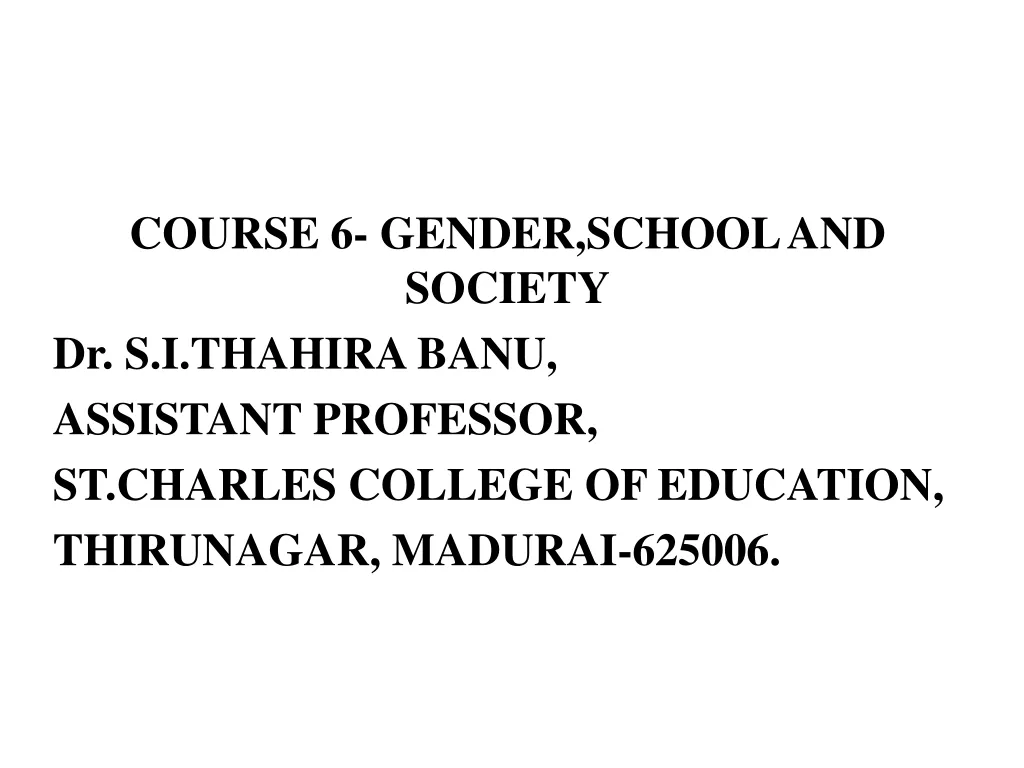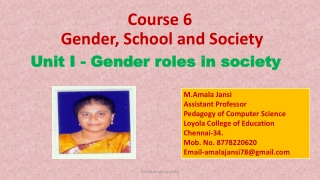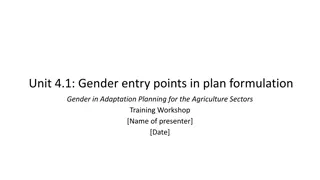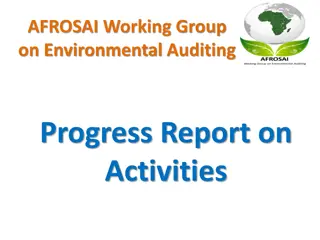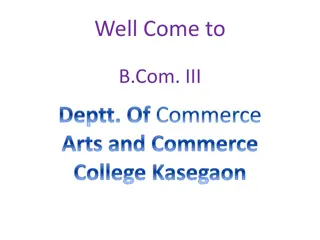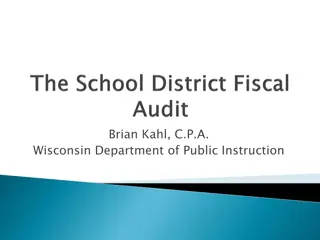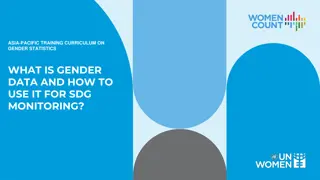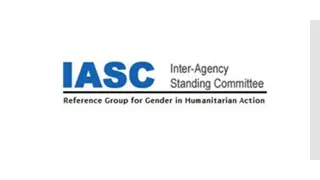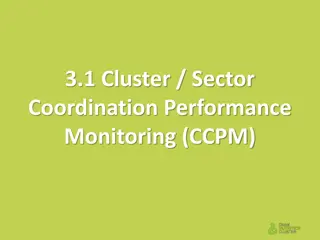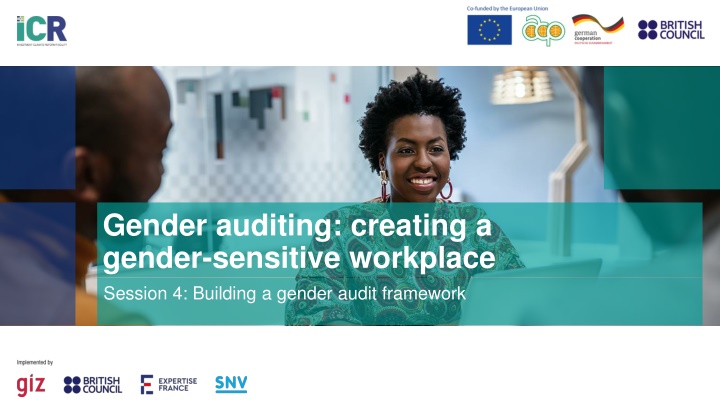
Building a Gender Audit Framework: Key Considerations and Strategies
Explore the essentials of creating a gender-sensitive workplace through a gender audit framework. Learn about key areas of inquiry, the composition of the audit team, and other crucial considerations to ensure a successful gender audit.
Uploaded on | 2 Views
Download Presentation

Please find below an Image/Link to download the presentation.
The content on the website is provided AS IS for your information and personal use only. It may not be sold, licensed, or shared on other websites without obtaining consent from the author. If you encounter any issues during the download, it is possible that the publisher has removed the file from their server.
You are allowed to download the files provided on this website for personal or commercial use, subject to the condition that they are used lawfully. All files are the property of their respective owners.
The content on the website is provided AS IS for your information and personal use only. It may not be sold, licensed, or shared on other websites without obtaining consent from the author.
E N D
Presentation Transcript
Gender auditing: creating a gender-sensitive workplace Session 4: Building a gender audit framework
Key questions: Building a gender audit framework 1. Assume that your group is preparing to run a gender audit. 2. Your task is to prepare a set of key questions to guide you in the evidence gathering. 3. Identify the key areas of interest to you. 4. Appoint someone to jot down your ideas. 5. Appoint a spokesperson from the group, although everyone is free to participate in the discussion. 2
Overview of key areas of enquiry Context Strategy & Structure Company Culture National & international context Laws and regulations, policies Sector specific laws Company legal obligations Does organisation have a gender strategy/policies? Is gender mainstreaming reflected in strategies, objectives and plans? What about in processes and procedures? Is gender mainstreaming reflected in products/services? What is the perception of gender equality in organisational culture? Support? Resistance? Is it a priority? Is there a commitment to action? Does organisational culture support or hinder gender mainstreaming Are staff held accountable for gender equality results? Are staff able to access information or training to understand and address gender equality? Competence Knowledge, skills, resources to address issues & implement action plan and achieve improvements? Dedicated budget to improve gender equality? Collection of sex disaggregated data? Is it used to track progress? External Image & Influence Reputation for being a gender just organisation Extending requirements beyond the organisation 3
Other key considerations Senior level commitment Review documentation Analysis of benefits and risks Combine multiple sources of evidence Confidentiality and anonymity Soft skills Audit team Managing logistics 4
Composition of the audit team Balance of men & women Knowledge of audited unit / sector The Audit Team Coordinating with workplace counterpart Gender audit experience 5
Managing logistics What you need from the organisation Clarity about team & roles Logistics Confirm objectives & scope Identify stakeholders Finalise action plan 6
Combine multiple sources of evidence Documents: strategies, policies, plans, budgets and financial plans Marketing and communication documents Observation: premises, facilities, staff interactions Primary research: interviews, surveys, self-administered instruments Secondary research: other studies carried out previously External view: clients, suppliers, etc. 7
Soft skills Questions: open, closed, leading Opportunities to observe Empathy & Flexibility Active listening, summarising, check understanding Use a framework, not pre-set questionnaire. 8

